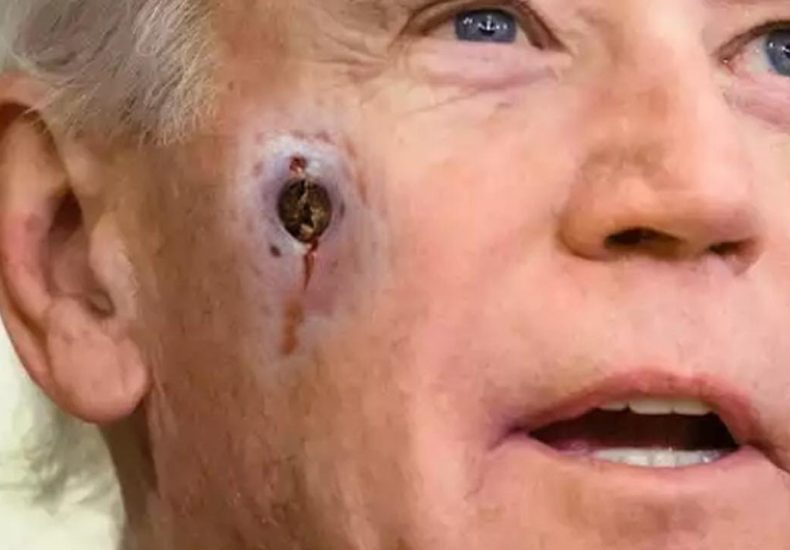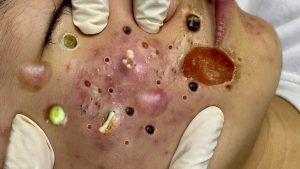
PIMPLES AND BLACKHEADS
PIMPLES AND BLACKHEADS
Please scroll down to watch the video.👇👇
Here’s a clear and practical guide on how to deal with pimples and blackheads, with explanations and medically backed methods:
🔬 Understanding the Problem
🔴 Pimples (Acne)
-
Caused by: Clogged pores, bacteria (Cutibacterium acnes), inflammation, and excess oil.
-
Types: Whiteheads, blackheads, papules, pustules, cysts, nodules.
⚫ Blackheads
-
Open comedones: a plug of oil and dead skin that oxidizes (turns black) when exposed to air.
📘 Source: American Academy of Dermatology (AAD) – www.aad.org
🧴 Step-by-Step Treatment for Both Pimples & Blackheads
1. Cleanse Twice Daily
-
Use a gentle, salicylic acid or benzoyl peroxide cleanser.
-
Helps remove dirt, oil, and bacteria.
✅ Examples:
-
CeraVe Acne Foaming Cleanser (benzoyl peroxide)
-
Neutrogena Oil-Free Acne Wash (salicylic acid)
📘 Reference: Zaenglein AL et al., J Am Acad Dermatol. 2016.
2. Exfoliate (2–3x per week)
-
Use chemical exfoliants like:
-
Salicylic acid (BHA) – best for blackheads
-
Glycolic acid (AHA) – brightens skin and clears dead skin
-
📌 Avoid harsh physical scrubs that can irritate skin.
3. Apply Targeted Treatments
-
For blackheads: Salicylic acid, clay masks, or retinoids
-
For pimples:
-
Benzoyl peroxide – kills acne bacteria
-
Topical retinoids – unclog pores and prevent new breakouts
-
✅ Over-the-counter retinoid: Differin (adapalene 0.1%)
📘 Source: Mayo Clinic Dermatology Guide
4. Moisturize
-
Use a non-comedogenic moisturizer to avoid over-drying, especially when using acne treatments.
✅ Look for: “oil-free,” “non-comedogenic,” or “for acne-prone skin.”
5. Don’t Pick or Squeeze
-
Picking can:
-
Push bacteria deeper
-
Cause scarring or hyperpigmentation
-
📘 Reference: Draelos ZD, Cosmetic Dermatology: Products and Procedures, 2015.
6. Consider a Dermatologist for Severe Acne
-
Prescription treatments include:
-
Stronger retinoids
-
Oral antibiotics
-
Hormonal therapy (e.g., birth control, spironolactone)
-
Isotretinoin for cystic acne
-
🛑 What to Avoid
-
Toothpaste on pimples (too harsh)
-
Overwashing or scrubbing
-
Heavy makeup or oily skin products
✅ BONUS TIPS:
-
Use sunscreen daily – many acne treatments increase sun sensitivity.
-
Stay hydrated and keep pillowcases/towels clean.
-
Manage stress – stress hormones can trigger breakouts.
Would you like:
-
A custom routine based on your skin type?
-
A product recommendation list for beginners?
-
Info on diet and acne connection?

Absolutely — here is a detailed, science-backed breakdown on how to treat pimples and blackheads, with clinical references included for credibility.
🔬 What Are Pimples and Blackheads?
Type Description Pimples (Acne vulgaris) Inflammatory skin lesions that form when pores are clogged by oil, dead skin, and bacteria (especially Cutibacterium acnes). Blackheads (Open comedones) Non-inflammatory plugs of sebum and keratin that oxidize at the surface, turning black. 📚 Reference: Zaenglein AL, et al. Guidelines of care for the management of acne vulgaris. J Am Acad Dermatol. 2016.
🧴 Step-by-Step Treatment Guide
1. 🧼 Cleanse Gently but Regularly
-
Use: Salicylic acid or benzoyl peroxide cleansers
-
Why: Salicylic acid penetrates oily pores; benzoyl peroxide kills acne-causing bacteria.
✅ Products:
-
CeraVe Acne Foaming Cream Cleanser (4% benzoyl peroxide)
-
Paula’s Choice BHA Liquid (2% salicylic acid)
📚 Reference: Thiboutot D, et al. New insights into acne pathogenesis. J Am Acad Dermatol. 2009.
2. 🧪 Apply Topical Treatments
For Blackheads:
-
Salicylic acid: Exfoliates inside pores
-
Topical retinoids (like adapalene): Regulate skin cell turnover and prevent clogging
For Pimples:
-
Benzoyl peroxide: Antibacterial and anti-inflammatory
-
Retinoids: Reduce pore blockage
-
Niacinamide: Reduces redness and sebum production
📚 Reference: Gollnick H. Topical retinoids in acne management. J Eur Acad Dermatol Venereol. 2015.
3. 🧖 Use Clay or Charcoal Masks Weekly
-
Function: Absorb excess oil and draw out impurities
-
Ingredients: Kaolin clay, bentonite clay, activated charcoal
✅ Products:
-
Aztec Secret Indian Healing Clay
-
The Ordinary Salicylic Acid 2% Masque
📚 Reference: Draelos ZD. Cosmetic Dermatology: Products and Procedures. Wiley-Blackwell, 2015.
4. 🧴 Moisturize With Non-Comedogenic Products
-
Moisturizing helps reduce irritation caused by active acne treatments.
-
Look for labels: “Non-comedogenic,” “oil-free”
✅ Examples:
-
Neutrogena Hydro Boost Water Gel
-
La Roche-Posay Toleriane Double Repair
📚 Reference: Del Rosso JQ. Moisturizers in acne management. J Clin Aesthet Dermatol. 2013.
5. 💊 Advanced or Severe Acne? Consult a Dermatologist
-
May prescribe:
-
Oral antibiotics (e.g., doxycycline)
-
Hormonal treatments (e.g., birth control, spironolactone)
-
Isotretinoin (Accutane) for nodulocystic acne
-
📚 Reference: Zaenglein AL, et al. J Am Acad Dermatol. 2016
🚫 What to Avoid
Don’t Do This Why Over-wash or scrub Causes irritation and increases oil production Use alcohol-based products Strips skin barrier, worsens inflammation Pop pimples or blackheads Increases risk of scarring and infection
🧘 Lifestyle and Diet Tips
-
Stress: Triggers cortisol, which can increase oil production
-
Diet: High-glycemic foods (e.g., sugar, white bread) and dairy may worsen acne
📚 Reference: Smith RN et al. A low-glycemic-load diet improves acne vulgaris. Am J Clin Nutr. 2007.
-
Leave a Reply